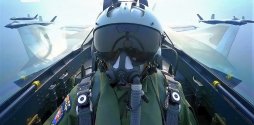I don't agree with this at all. I think it dismisses all the progress and advancements China has made with its military as just the Pentagon lying to fundraise. It also implies that China can never be a peer competitor of the US, because once again anything China develops is just another lie the Pentagon tells to get money. Aside from this, it also implies that the entire general staff of the US armed forces are pathological liars who regularly tell falsehoods to raise money.
This just isn't a useful analytical model to use.
You wrote "It could be that all the E-7/F-35 combo provides the USAF is parity. It could even be that the E-7/F-35 combo is still worse than the KJ-500/J-20. All we can conclude is that it's better than E-3/F-35."
The bolded parts is overreach.
All that we can conclude is that the USAF seems thinks that the E-7 is superior to the E-3 -- which is very reasonable given the E-7 is like two generations ahead of E-3 in technology.
Why are people trying to extrapolate some sort of big "gotcha" revelations from this interview, goodness gracious. Is it not significant enough just to have confirmation that J-20s and F-35s have had encounters in the East China Sea...

